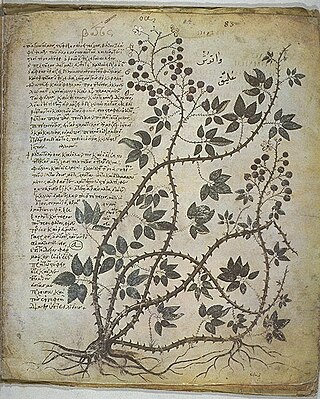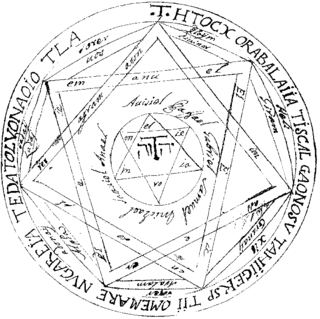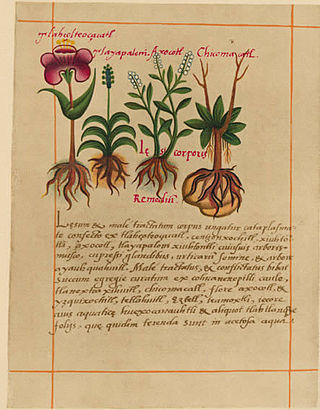
Sir Hans Sloane, 1st Baronet, was an Anglo-Irish physician, naturalist, and collector, with a collection of 71,000 items which he bequeathed to the British nation, thus providing the foundation of the British Museum, the British Library, and the Natural History Museum, London. He was elected to the Royal Society at the age of 24. Sloane travelled to the Caribbean in 1687 and documented his travels and findings with extensive publications years later. Sloane was a renowned medical doctor among the aristocracy, and was elected to the Royal College of Physicians at age 27. Though he is credited with the invention of chocolate milk, it is more likely that he learned the practice of adding milk to drinking chocolate while living and working in Jamaica. Streets and places were later named after him, including Hans Place, Hans Crescent, and Sloane Square in and around Chelsea, London – the area of his final residence – and also Sir Hans Sloane Square in his birthplace in Northern Ireland, Killyleagh.

Materia medica is a Latin term from the history of pharmacy for the body of collected knowledge about the therapeutic properties of any substance used for healing. The term derives from the title of a work by the Ancient Greek physician Pedanius Dioscorides in the 1st century AD, De materia medica, 'On medical material'.

The Key of Solomon is a pseudepigraphical grimoire attributed to King Solomon. It probably dates back to the 14th or 15th century Italian Renaissance. It presents a typical example of Renaissance magic.

Leonhart Fuchs, sometimes spelled Leonhard Fuchs and cited in Latin as Leonhartus Fuchsius, was a German physician and botanist. His chief notability is as the author of a large book about plants and their uses as medicines, a herbal, which was first published in 1542 in Latin. It has about 500 accurate and detailed drawings of plants, which were printed from woodcuts. The drawings are the book's most notable advance on its predecessors. Although drawings had been used in other herbal books, Fuchs' book proved and emphasized high-quality drawings as the most telling way to specify what a plant name stands for.

A herbal is a book containing the names and descriptions of plants, usually with information on their medicinal, tonic, culinary, toxic, hallucinatory, aromatic, or magical powers, and the legends associated with them. A herbal may also classify the plants it describes, may give recipes for herbal extracts, tinctures, or potions, and sometimes include mineral and animal medicaments in addition to those obtained from plants. Herbals were often illustrated to assist plant identification.

Martin Lister was an English naturalist and physician. His daughters Anne and Susanna were two of his illustrators and engravers.

Taqwīm aṣ‑Ṣiḥḥa is originally an 11th-century Arab medical treatise by Ibn Butlan of Baghdad. In the West, the work is known by the Latinized name taken by its translations: TacuinumSanitatis. It is a medieval handbook mainly on health, aimed at a cultured lay audience. The text exists in several variant Latin versions, the manuscripts of which are characteristically so profusely illustrated that one student called the Tacuinum "a [300] picture book", only "nominally a medical text". Numerous European versions were made in increasing numbers in the 14th and 15th centuries.
James Petiver was a London apothecary, a fellow of the Royal Society as well as London's informal Temple Coffee House Botany Club, famous for his specimen collections in which he traded and study of botany and entomology. He corresponded with John Ray and Maria Sibylla Merian. Some of his notes and specimens were used by Carolus Linnaeus in descriptions of new species. The genus Petiveria was named in his honour by Charles Plumier. His collections were bought by Sir Hans Sloane and became a part of the Natural History Museum.

Li Shizhen, courtesy name Dongbi, was a Chinese acupuncturist, herbalist, naturalist, pharmacologist, physician, and writer of the Ming dynasty. He is the author of a 27-year work, the Compendium of Materia Medica. He developed several methods for classifying herb components and medications for treating diseases.

British Library, Egerton MS 609 is a Breton Gospel Book from the late or third quarter of the ninth century. It was created in France, though the exact location is unknown. The large decorative letters which form the beginning of each Gospel are similar to the letters found in Carolingian manuscripts, but the decoration of these letters is closer to that found in insular manuscripts, such as the Book of Kells and the Lindisfarne Gospels. However, the decoration in the Breton Gospel Book is simpler and more geometric in form than that found in the Insular manuscripts. The manuscript contains the Latin text of St Jerome's letter to Pope Damasus, St. Jerome's commentary on Matthew, and the four Gospels, along with prefatory material and canon tables. This manuscript is part of the Egerton Collection in the British Library.

Pseudo-Apuleius is the name given in modern scholarship to the author of a 4th-century herbal known as Pseudo-Apuleius Herbarius or Herbarium Apuleii Platonici. The author of the text apparently wished readers to think that it was by Apuleius of Madaura (124–170 CE), the Roman poet and philosopher, but modern scholars do not believe this attribution. Little or nothing else is known of Pseudo-Apuleius apart from this.

The Libellus de Medicinalibus Indorum Herbis is an Aztec herbal manuscript, describing the medicinal properties of various plants used by the Aztecs. It was translated into Latin by Juan Badiano, from a Nahuatl original composed in the Colegio de Santa Cruz de Tlatelolco in 1552 by Martín de la Cruz that is no longer extant. The Libellus is also known as the Badianus Manuscript, after the translator; the Codex de la Cruz-Badiano, after both the original author and translator; and the Codex Barberini, after Cardinal Francesco Barberini, who had possession of the manuscript in the early 17th century.

The British Library is a research library in London that is the national library of the United Kingdom. It is one of the largest libraries in the world. It is estimated to contain between 170 and 200 million items from many countries. As a legal deposit library, the British Library receives copies of all books produced in the United Kingdom and Ireland, including a significant proportion of overseas titles distributed in the UK. The Library is a non-departmental public body sponsored by the Department for Culture, Media and Sport.

Alain Touwaide is a US historian of medicine and sciences of Belgian origin. He taught history of Greek medicine and its tradition, Food history and other topics in the Medical Humanities at the University of California Los Angeles (UCLA), during the academic years 2015-2016, 2016-2017, 2017-2018, 2018-2019.
Metrodora was possibly the author of an ancient Greek medical text, On the Diseases and Cures of Women. She is known from a single Byzantine manuscript in the collection of the Laurentian Library in Florence. If she existed, her dates are disputed, with scholars' suggestions ranging from the first to the sixth century AD, and the latest possible date being the composition of the Laurentian manuscript in the tenth or eleventh century. Her name is also disputed; some scholars have suggested that Metrodora was a pseudonym or even the misinterpretation of the title of her work.

Matthaeus Platearius was a physician from the medical school at Salerno, and is thought to have produced a twelfth-century Latin manuscript on medicinal herbs titled "Circa Instans", later translated into French as "Le Livre des simples medecines". It was an alphabetic listing and textbook of simples that was based on Dioscorides "Vulgaris", which described the appearance, preparation, and uses of various drugs. It was widely acclaimed, and was one of the first herbals produced by the newly developed printing process in 1488. Ernst Meyer considered it equal to the herbals of Pliny and Dioscorides, while George Sarton thought it an improvement on "De Materia Medica".

The Hortus Sanitatis, a Latin natural history encyclopaedia, was published by Jacob Meydenbach in Mainz, Germany in 1491.

The Landévennec Group is a group of 10th and 11th century illuminated manuscripts of the Four Evangelists from Basse-Bretagne, probably all from the scriptorium of Landévennec Abbey. Influenced by insular art, they are marked by their representation of the evangelists as humans with animal heads.

Johannes van Heeck,, was a Dutch physician, naturalist, alchemist and astrologer. Together with Prince Federico Cesi, Anastasio de Filiis and Francesco Stelluti, he was one of the four founding members of the Accademia dei Lincei, the first learned society dedicated to understanding of the natural world through scientific enquiry.

Francis Bernard was an English apothecary, astrologer and physician, known for a large medical library.




















